Lobelia cascading: description and rules of care
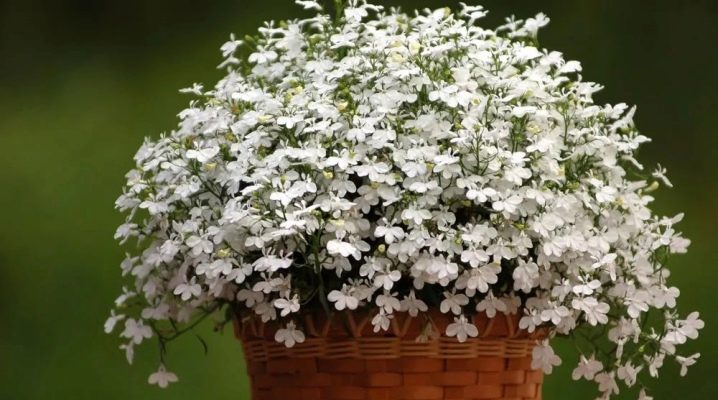
The lobelia garden flower looks great in any floral arrangement. The harmony of shades is possible due to the huge variety of varieties of this culture. The types of cascading lobelia look especially aesthetically pleasing in flowerpots or in hanging containers.
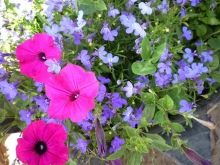
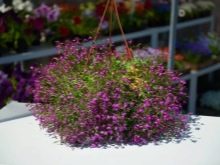
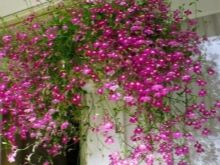
Description
The culture belongs to annual plants. The most famous type is the Rosamund lobelia, characterized by a height of 10 to 25 cm, thin stems, numerous leaves and flowers of a dark pink color with a diameter of 1 cm. The next in the ranking of the most popular lobelias is the cascading variety. The bushes of such lobelia are not so dense, but they are longer (35–40 cm) and much more luxuriant. It is precisely the splendor that distinguishes the cascading varieties. Their flowers reach 2 cm in diameter. The stores offer options in a variety of shades.
It is a non-capricious variety that can thrive in both sun and shade.... However, the plant fastidious about the indicators of humidity and temperature. Despite the warmth, the culture can withstand cold temperatures down to -1 degrees. The plant blooms well in the open field, but it looks more spectacular in an elevated area, in hanging boxes and pots.
If you plant flowers with a straight stem nearby, for example: asters or dahlias, then the lobelia will not only become a beautiful design for the composition, but also protect the earth from drying out and weathering.
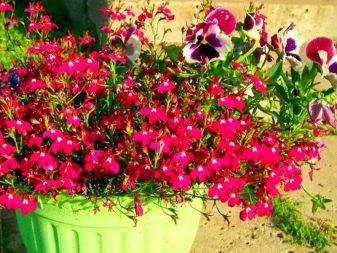
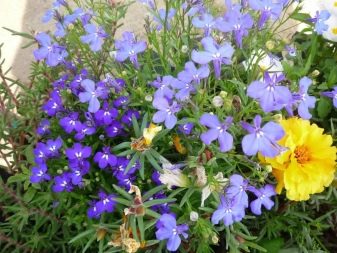
Varieties
There are many types of plants, but the following are considered the most popular:
- perennial;
- ampelous;
- climbing;
- aquarium;
- blackberry;
- bush.

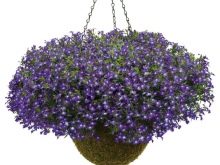
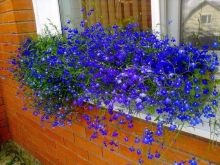

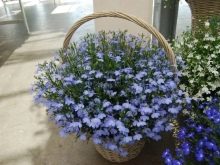
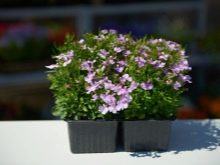
As noted, cascading species are among the most common.
- Red cascade. An annual ampelous plant with thin creeping shoots up to 50 cm long. It blooms from June to autumn, the flowering is lush. The flowers are red in color, their diameter is up to 2 cm. Also available in a purple-red cascade variation. This variety prefers to bloom in a sunny place, loves timely moisture, tolerates cold. Grows well in loose or moderately fertile soil. It is sown in seedlings.
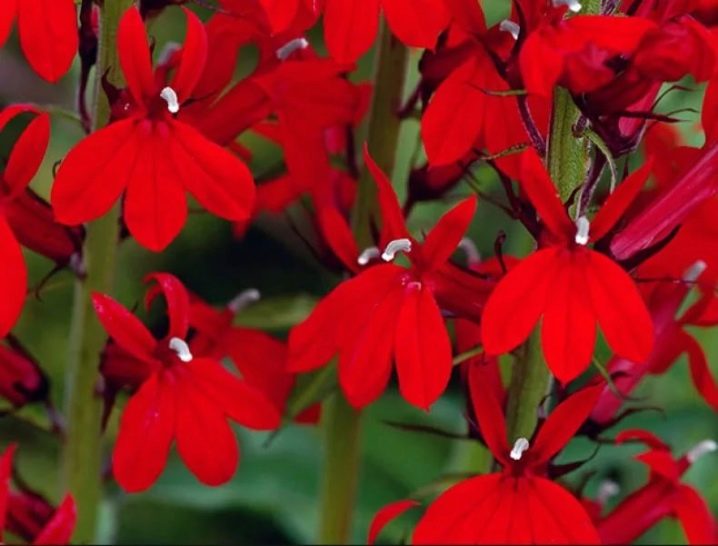
- Purple cascade. It also belongs to the ampelous species, the length of the creeping stems is up to 30 cm. During flowering, densely arranged lilac-purple flowers up to 2 cm in diameter appear on the stems. They form on short pedicels, one at a time in the leaf axils. The leaves are small, whole.
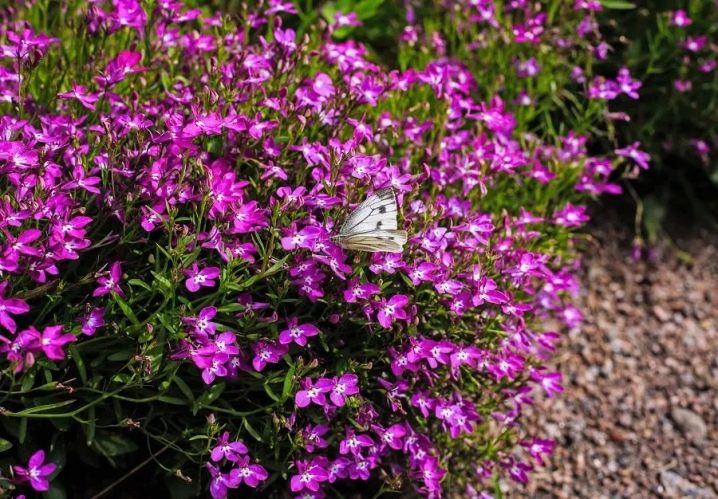
- Blue cascade. The length of the shoots reaches 50 cm. Flowers 2 cm in diameter have a bright blue color. Flowering lasts from June to September. Faded stems need to be regularly eliminated, then the "blue carpet" will look even more aesthetically pleasing.

- White cascade. This is the most delicate version of the cascading variety. Its shoots are thin, their length is up to 50 cm. The flowering is very abundant. The flowers are snow-white, the diameter is the same.

- "Mix of colors." These seeds contain several varieties of lobelia at once. Perhaps this is the most spectacular variant of planting material, which, during flowering, embodies all the variety of bright luxurious shades.

Planting and leaving
February is the best time to start sowing a crop, since the first stage of plant development is characterized by slow growth. The ideal soil for growing a plant consists of sand, earth and humus. in proportions 1: 1: 0.5, respectively. The seeds are scattered on the surface of the soil and cover the pot with glass or transparent film to create a greenhouse effect.Keep in mind that large and dense seeding can cause pulling of the crop, so try to plant fewer grains so that the seedlings are more complete and of better quality.
The first shoots will hatch in about 10 days. From that day on, the plant should be moderately watered, and after a month a pick is made. When planting specimens, a capacity is selected at the rate of 1 square meter of land per 10 bunches.
As soon as the seedlings grow up to 3 cm, pinch the top. This procedure is necessary for good bushiness. In May, the seedlings are planted in the garden.
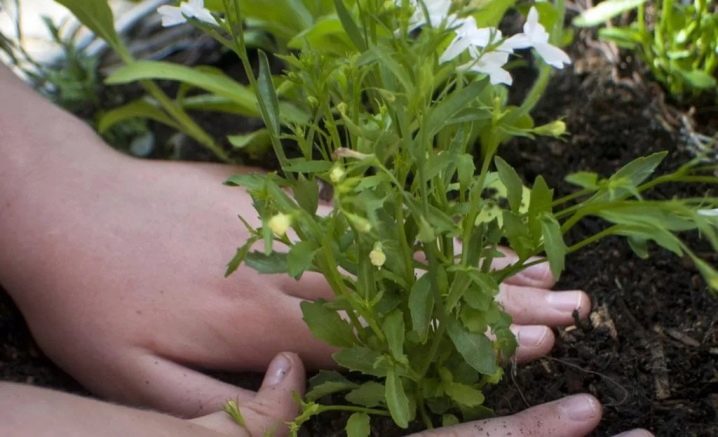
Flowering begins in June. To extend this period, you can cut off the bushes at the end and feed the plant with minerals. And then the culture will bloom again. In general, you need to start fertilizing the plant already a couple of weeks after planting in open ground. For feeding, organic fertilizers are suitable, which are diluted in a 1: 10 ratio with mullein or nettle infusion.
For information on how to care for cascading lobelia, see the following video.





































































































The comment was sent successfully.